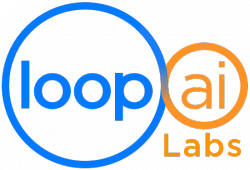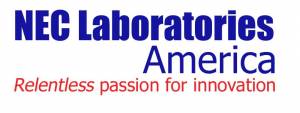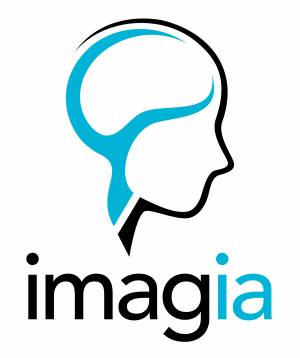ICLR 2015
Basic Information
When
May 7 - 9, 2015
Where
The Hilton San Diego Resort & Spa
There is a negotiated room rate for ICLR 2015. Please use this link for reservations. If you have difficulty with the booking site, please call the Hilton San Diego's in-house reservation team directly at +1-619-276-4010 ext. 1.
Registration
Anyone registering after April 29, 2015 will need to see Karen Smith at the registration desk for a badge.
| Late registration | regular | $800 |
| Late registration | student | $600 |
Note that the registration fee includes breakfast, coffee breaks, dinner, and the joint ICLR/AISTATS reception. See the conference schedule for the timing of these events.
Important Dates
| 19 Dec. 2014 | Authors submit papers to ICLR 2015 via CMT before 11:59 pm PST |
|---|---|
| 26 Dec. 2014 | Authors update their submissions with the arXiv number and URL if they were not available on 19 Dec. 2014. |
| 02 Jan. 2015 | Reviewers receive their assignments. |
| 09 Feb. 2015 | Reviewers submit their reviews. |
| 27 Feb. 2015 | Authors post their initial responses to the reviews. |
| 09 Mar. 2015 | End of discussion period for papers. |
| 20 Mar. 2015 | Decisions sent to authors. |
| 06 Apr. 2015 | Deadline for early registration and to register for the hotel at the conference rate. |
Committee
General Chairs
Yoshua Bengio, Université de Montreal
Yann LeCun, New York University and Facebook
Program Chairs
Brian Kingsbury, IBM Research
Samy Bengio, Google
Nando de Freitas, University of Oxford
Hugo Larochelle, Université de Sherbrooke
Contact
iclr2015.programchairs@gmail.com
Discussion, Forum, Pictures on the ICLR Facebook Page
Sponsors
ICLR 2015 gratefully acknowledges the support of its sponsors.
Gold
Silver
Bronze
Conference Wireless Access
network: Hilton Resort
username: iclr2015
password: deeplearning
Conference Schedule
| Date | Start | End | Event | Details | ||
|---|---|---|---|---|---|---|
| May 7 | 0730 | 0900 | breakfast | South Poolside – Sponsored by Baidu | ||
| 0900 | 1230 | Oral Session – International Ballroom | ||||
| 0900 | 0940 | keynote | Antoine Bordes (Facebook), Artificial Tasks for Artificial Intelligence | (slides) | Video1 Video2 | |
| 0940 | 1000 | oral | Word Representations via Gaussian Embedding by Luke Vilnis and Andrew McCallum (Brown University) | (slides) | Video | |
| 1000 | 1020 | oral | Deep Captioning with Multimodal Recurrent Neural Networks (m-RNN) by Junhua Mao, Wei Xu, Yi Yang, Jiang Wang, Zhiheng Huang, Alan Yuille (Baidu and UCLA) | (slides) | Video | |
| 1020 | 1050 | coffee break | ||||
| 1050 | 1130 | keynote | David Silver (Google DeepMind), Deep Reinforcement Learning | (slides) | Video1 Video2 | |
| 1130 | 1150 | oral | Deep Structured Output Learning for Unconstrained Text Recognition by Text Recognition” by Max Jaderberg, Karen Simonyan, Andrea Vedaldi, Andrew Zisserman (Oxford University and Google DeepMind) | (slides) | Video | |
| 1150 | 1210 | oral | Very Deep Convolutional Networks for Large-Scale Image Recognition by Karen Simonyan, Andrew Zisserman (Oxford) | (slides) | Video | |
| 1210 | 1230 | oral | Fast Convolutional Nets With fbfft: A GPU Performance Evaluation by Nicolas Vasilache, Jeff Johnson, Michael Mathieu, Soumith Chintala, Serkan Piantino, Yann LeCun (Facebook AI Research) | (slides) | Video | |
| 1230 | 1400 | lunch | On your own | |||
| 1400 | 1700 | posters | Workshop Poster Session 1 – The Pavilion | |||
| 1730 | 1900 | dinner | South Poolside – Sponsored by Google | |||
| May 8 | 0730 | 0900 | breakfast | South Poolside – Sponsored by Facebook | ||
| 0900 | 1230 | Oral Session – International Ballroom | ||||
| 0900 | 0940 | keynote | Terrence Sejnowski (Salk Institute), Beyond Representation Learning | Video1 Video2 | ||
| 0940 | 1000 | oral | Reweighted Wake-Sleep | (slides) | Video | |
| 1000 | 1020 | oral | The local low-dimensionality of natural images | (slides) | Video | |
| 1020 | 1050 | coffee break | ||||
| 1050 | 1130 | keynote | Percy Liang (Stanford), Learning Latent Programs for Question Answering | (slides) | Video1 Video2 | |
| 1130 | 1150 | oral | Memory Networks | (slides) | Video | |
| 1150 | 1210 | oral | Object detectors emerge in Deep Scene CNNs | (slides) | Video | |
| 1210 | 1230 | oral | Qualitatively characterizing neural network optimization problems | (slides) | Video | |
| 1230 | 1400 | lunch | On your own | |||
| 1400 | 1700 | posters | Workshop Poster Session 2 – The Pavilion | |||
| 1730 | 1900 | dinner | South Poolside – Sponsored by IBM Watson | |||
| May 9 | 0730 | 0900 | breakfast | South Poolside – Sponsored by Qualcomm | ||
| 0900 | 0940 | keynote | Hal Daumé III (U. Maryland), Algorithms that Learn to Think on their Feet | (slides) | Video | |
| 0940 | 1000 | oral | Neural Machine Translation by Jointly Learning to Align and Translate | (slides) | Video | |
| 1000 | 1030 | coffee break | ||||
| 1030 | 1330 | posters | Conference Poster Session – The Pavilion (AISTATS attendees are invited to this poster session) | |||
| 1330 | 1700 | lunch and break | On your own | |||
| 1700 | 1800 | ICLR/AISTATS Oral Session – International Ballroom | ||||
| 1700 | 1800 | keynote | Pierre Baldi (UC Irvine), The Ebb and Flow of Deep Learning: a Theory of Local Learning | Video | ||
| 1800 | 2000 | ICLR/AISTATS reception | Fresco's (near the pool) |
Keynote Talks
Antoine Bordes
Artificial Tasks for Artificial Intelligence
Despite great recent advances, the road towards intelligent machines able to reason and adapt in real-time in multimodal environments remains long and uncertain. This final goal is so complex and further away that it is impossible to perform experiments and research directly in the desired final conditions, so one has to use intermediate and/or proxy tasks as midway goals. Some of those tasks like object detection in computer vision, or machine translation in natural language processing are very useful on their own and fuel many applications. However, such intermediate tasks are already very difficult and it is not obvious that they are suited testbeds for designing intelligent systems: their inherent complexity makes it hard to precisely interpret the behavior and true capabilities of algorithms, in particular regarding key sophisticated capabilities like reasoning and planning. Hence, in this talk, we advocate the use of controlled artificial environments for developing research in AI, environments in which one can precisely study the behavior of algorithms and unambiguously assess their abilities.
This talk follows from joint work and discussions with Jason Weston, Sumit Chopra, Tomas Mikolov and Leon Bottou, among others.
David Silver
Deep Reinforcement Learning
In this talk I will discuss how reinforcement learning (RL) can be combined with deep learning (DL). There are several ways to combine DL and RL together, including value-based, policy-based, and model-based approaches with planning. Several of these approaches have well-known divergence issues, and I will present simple methods for addressing these instabilities. These methods have achieved notable success in the Atari 2600 domain. I will present recent a selection of recent results that improve on the published state-of-the-art in Atari and other challenging domains. Finally, I will discuss how RL can be used to improve DL, even when the native problem is supervised or unsupervised learning.
Terrence Sejnowski
Beyond Representation Learning
As we build ever deeper networks with ever more sophisticated representations it is a good time to pause and ask ourselves where this will end. Building ever taller skyscrapers gets our heads in the clouds but will it get us to the moon? A good place to look for answers is nature. This lecture will start with a look at the hierarchy of cortical areas where much of our intuition about deep learning came from, and will explore essential brain regions that these cortical areas communicate with that give rise to intelligent behavior.
Percy Liang
Learning Latent Programs for Question Answering
“The first Summer Olympics that had at least 20 nations took place in which city?” We tackle the problem of building a system to answering these questions that involve computing the answer. We propose a methodology based on semantic parsing, where we map a question onto a latent program (logical form), whose execution yields the answer (denotation). To obtain both depth (complexity of the program) and breadth (diversity of the questions/domains), we define a new task of answering a complex question from semi-structured tables on the web. We show promising results on the new dataset and invite the community to take on this challenge.
Hal Daumé III
Algorithms that Learn to Think on their Feet
The classic framework of machine learning is: example in, prediction out. This is great when examples are fully available. But it is very different from how humans reason. We get some information and may make a prediction. Or we may decide to get more information. For us, it's worth spending effort when making hard and important decisions (e.g., foreign policy); it is not on easy or low-cost decisions (e.g., afternoon snacks).
I'll describe our recent work that focuses on information cost, value, and time. I'll show examples from three settings in natural language processing: syntactic parsing, question answering in competitions and simultaneous machine translation. The last is the problem of incrementally producing a translation of a foreign sentence before the entire sentence is “heard” and is challenging even for well-trained humans.
This is joint work with a number of fantastic collaborators: Jordan Boyd-Graber, Leonardo Claudino, Jason Eisner, Lise Getoor, Alvin Grissom II, He He, Mohit Iyyer, John Morgan, Jay Pujara and Richard Socher.
Pierre Baldi
The Ebb and Flow of Deep Learning: a Theory of Local Learning
In a physical neural system, where storage and processing are intertwined, the learning rules for adjusting synaptic weights can only depend on local variables, such as the activity of the pre- and post-synaptic neurons. Thus learning models must specify two things: (1) which variables are to be considered local; and (2) which kind of function combines these local variables into a learning rule. We consider polynomial learning rules and analyze their behavior and capabilities in both linear and non-linear networks. As a byproduct, this framework enables the discovery of new learning rules and important relationships between learning rules and group symmetries.
Stacking local learning rules in deep feedforward networks leads to deep local learning. While deep local learning can learn interesting representations, it cannot learn complex input-output functions, even when targets are available for the top layer. Learning complex input-output functions requires instead local deep learning, where target information is transmitted to the deep layers, thereby raising two fundamental issues: (1) the nature of the transmission channel; and (2) the nature and amount of information transmitted over this channel. This leads to the class of deep targets learning algorithms, which provide targets for the deep layers, and its stratification along the information spectrum, illuminating the remarkable power and uniqueness of the backpropation algorithm. The theory clarifies the concept of Hebbian learning, what is learnable by Hebbian learning, and explains the sparsity of the space of learning rules discovered so far and the unique role backpropagation plays in this space.
Conference Oral Presentations
- Word Representations via Gaussian Embedding, Luke Vilnis and Andrew McCallum
- Deep Captioning with Multimodal Recurrent Neural Networks (m-RNN), Junhua Mao, Wei Xu, Yi Yang, Jiang Wang, and Alan Yuille
- Deep Structured Output Learning for Unconstrained Text Recognition, Max Jaderberg, Karen Simonyan, Andrea Vedaldi, and Andrew Zisserman
- Very Deep Convolutional Networks for Large-Scale Image Recognition, Karen Simonyan and Andrew Zisserman
- Fast Convolutional Nets With fbfft: A GPU Performance Evaluation, Nicolas Vasilache, Jeff Johnson, Michael Mathieu, Soumith Chintala, Serkan Piantino, and Yann LeCun
- Reweighted Wake-Sleep, Jorg Bornschein and Yoshua Bengio
- The local low-dimensionality of natural images, Olivier Henaff, Johannes Balle, Neil Rabinowitz, and Eero Simoncelli
- Memory Networks, Jason Weston, Sumit Chopra, and Antoine Bordes
- Object detectors emerge in Deep Scene CNNs, Bolei Zhou, Aditya Khosla, Agata Lapedriza, Aude Oliva, and Antonio Torralba
- Qualitatively characterizing neural network optimization problems, Ian Goodfellow and Oriol Vinyals
- Neural Machine Translation by Jointly Learning to Align and Translate, Dzmitry Bahdanau, Kyunghyun Cho, and Yoshua Bengio
May 9 Conference Poster Session
| Board | Presentation |
|---|---|
| 2 | FitNets: Hints for Thin Deep Nets, Adriana Romero, Nicolas Ballas, Samira Ebrahimi Kahou, Antoine Chassang, Carlo Gatta, and Yoshua Bengio |
| 3 | Techniques for Learning Binary Stochastic Feedforward Neural Networks, Tapani Raiko, Mathias Berglund, Guillaume Alain, and Laurent Dinh |
| 4 | Reweighted Wake-Sleep, Jorg Bornschein and Yoshua Bengio |
| 5 | Semantic Image Segmentation with Deep Convolutional Nets and Fully Connected CRFs, Liang-Chieh Chen, George Papandreou, Iasonas Kokkinos, Kevin Murphy, and Alan Yuille |
| 7 | Multiple Object Recognition with Visual Attention, Jimmy Ba, Volodymyr Mnih, and Koray Kavukcuoglu |
| 8 | Deep Narrow Boltzmann Machines are Universal Approximators, Guido Montufar |
| 9 | Transformation Properties of Learned Visual Representations, Taco Cohen and Max Welling |
| 10 | Joint RNN-Based Greedy Parsing and Word Composition, Joël Legrand and Ronan Collobert |
| 11 | Adam: A Method for Stochastic Optimization, Jimmy Ba and Diederik Kingma |
| 13 | Neural Machine Translation by Jointly Learning to Align and Translate, Dzmitry Bahdanau, Kyunghyun Cho, and Yoshua Bengio |
| 15 | Scheduled denoising autoencoders, Krzysztof Geras and Charles Sutton |
| 16 | Embedding Entities and Relations for Learning and Inference in Knowledge Bases, Bishan Yang, Scott Yih, Xiaodong He, Jianfeng Gao, and Li Deng |
| 18 | The local low-dimensionality of natural images, Olivier Henaff, Johannes Balle, Neil Rabinowitz, and Eero Simoncelli |
| 20 | Explaining and Harnessing Adversarial Examples, Ian Goodfellow, Jon Shlens, and Christian Szegedy |
| 22 | Modeling Compositionality with Multiplicative Recurrent Neural Networks, Ozan Irsoy and Claire Cardie |
| 24 | Very Deep Convolutional Networks for Large-Scale Image Recognition, Karen Simonyan and Andrew Zisserman |
| 25 | Speeding-up Convolutional Neural Networks Using Fine-tuned CP-Decomposition, Vadim Lebedev, Yaroslav Ganin, Victor Lempitsky, Maksim Rakhuba, and Ivan Oseledets |
| 27 | Deep Captioning with Multimodal Recurrent Neural Networks (m-RNN), Junhua Mao, Wei Xu, Yi Yang, Jiang Wang, and Alan Yuille |
| 28 | Deep Structured Output Learning for Unconstrained Text Recognition, Max Jaderberg, Karen Simonyan, Andrea Vedaldi, and Andrew Zisserman |
| 30 | Zero-bias autoencoders and the benefits of co-adapting features, Kishore Konda, Roland Memisevic, and David Krueger |
| 31 | Automatic Discovery and Optimization of Parts for Image Classification, Sobhan Naderi Parizi, Andrea Vedaldi, Andrew Zisserman, and Pedro Felzenszwalb |
| 33 | Understanding Locally Competitive Networks, Rupesh Srivastava, Jonathan Masci, Faustino Gomez, and Juergen Schmidhuber |
| 35 | Leveraging Monolingual Data for Crosslingual Compositional Word Representations, Hubert Soyer, Pontus Stenetorp, and Akiko Aizawa |
| 36 | Move Evaluation in Go Using Deep Convolutional Neural Networks, Chris Maddison, Aja Huang, Ilya Sutskever, and David Silver |
| 38 | Fast Convolutional Nets With fbfft: A GPU Performance Evaluation, Nicolas Vasilache, Jeff Johnson, Michael Mathieu, Soumith Chintala, Serkan Piantino, and Yann LeCun |
| 40 | Word Representations via Gaussian Embedding, Luke Vilnis and Andrew McCallum |
| 41 | Qualitatively characterizing neural network optimization problems, Ian Goodfellow and Oriol Vinyals |
| 42 | Memory Networks, Jason Weston, Sumit Chopra, and Antoine Bordes |
| 43 | Generative Modeling of Convolutional Neural Networks, Jifeng Dai, Yang Lu, and Ying-Nian Wu |
| 44 | A Unified Perspective on Multi-Domain and Multi-Task Learning, Yongxin Yang and Timothy Hospedales |
| 45 | Object detectors emerge in Deep Scene CNNs, Bolei Zhou, Aditya Khosla, Agata Lapedriza, Aude Oliva, and Antonio Torralba |
May 7 Workshop Poster Session
May 8 Workshop Poster Session
Presentation Guidelines
Conference Orals
* Each oral has a 20-minute time slot. Please prepare 15 minutes of material, and plan to use the last 5 minutes for questions and switching between speakers.
Poster Presentations
* The poster boards are 4' high x 8' wide (120 cm high X 240 cm wide).









